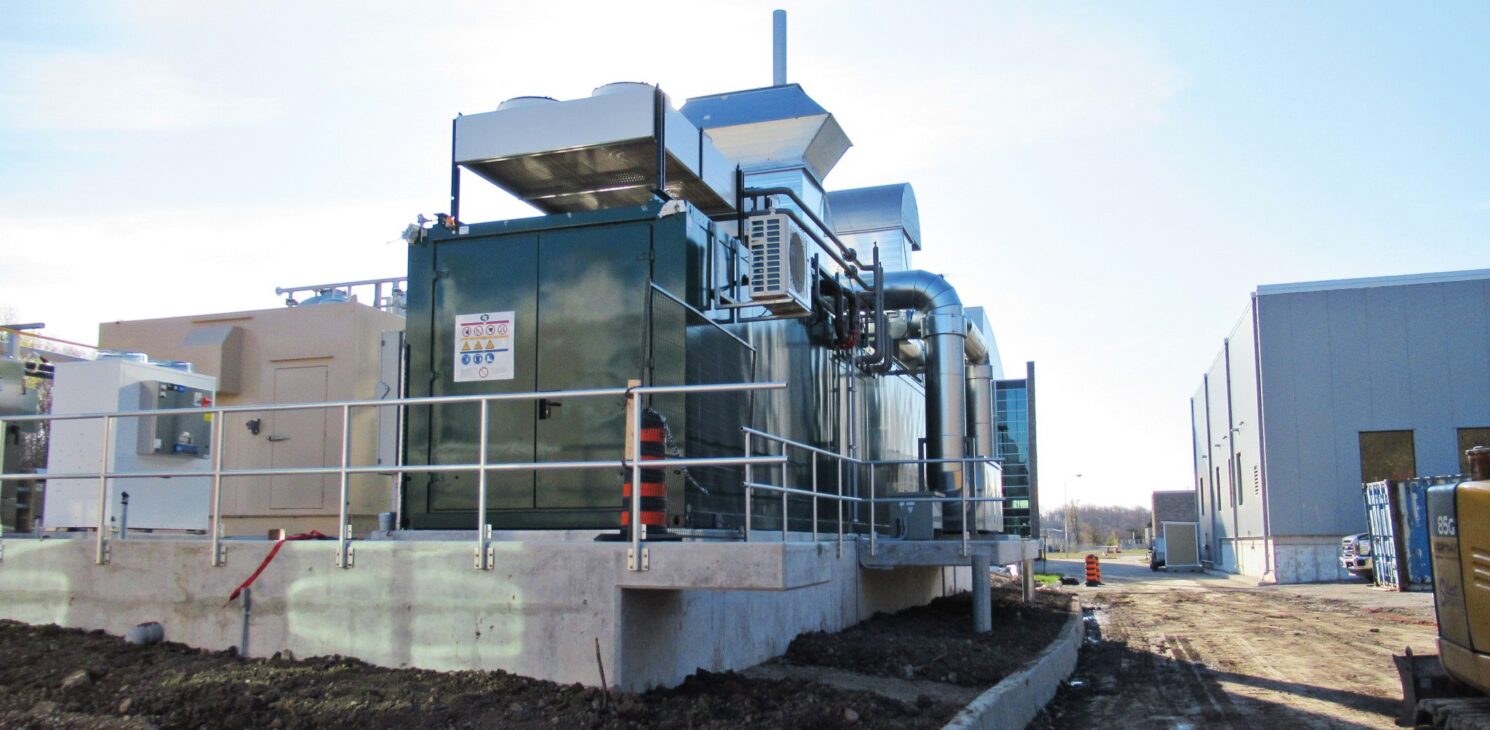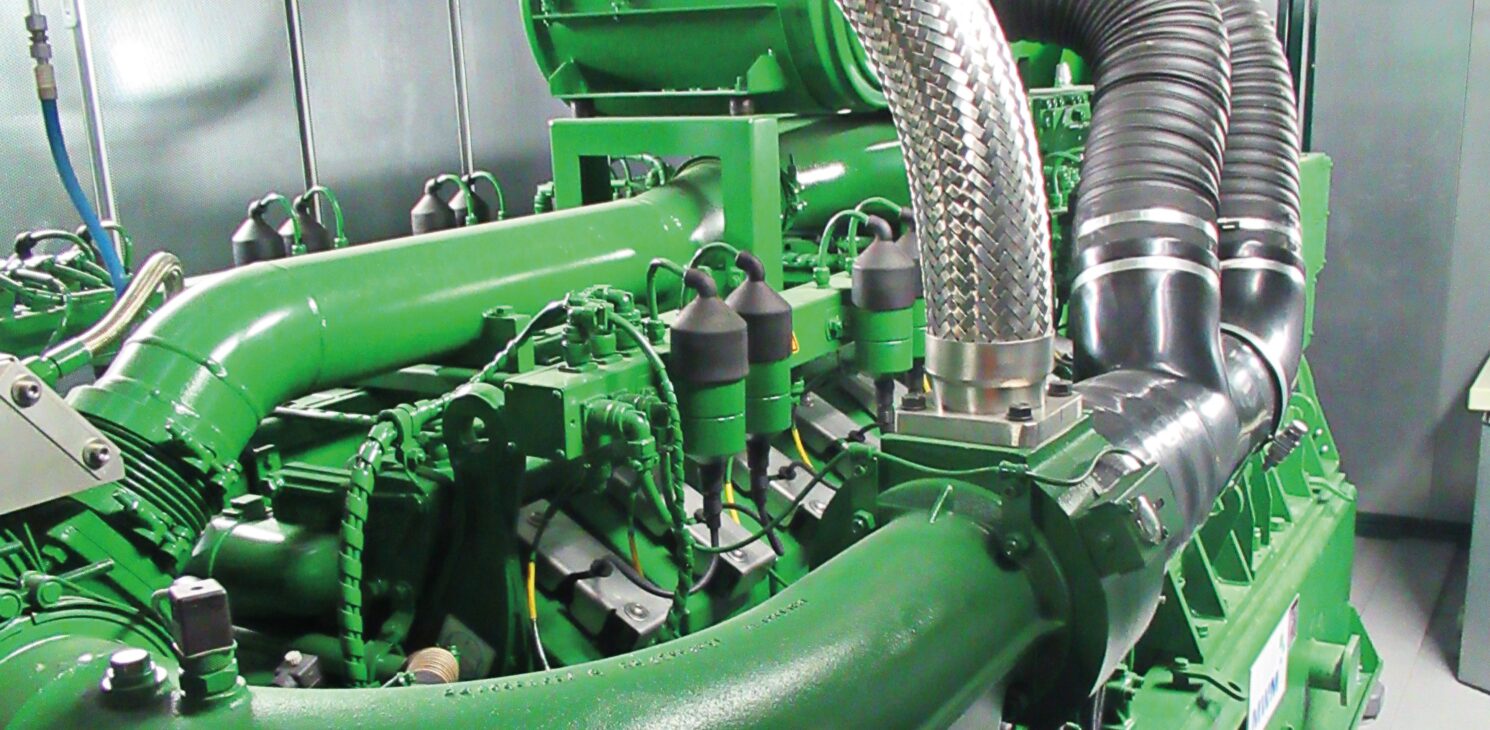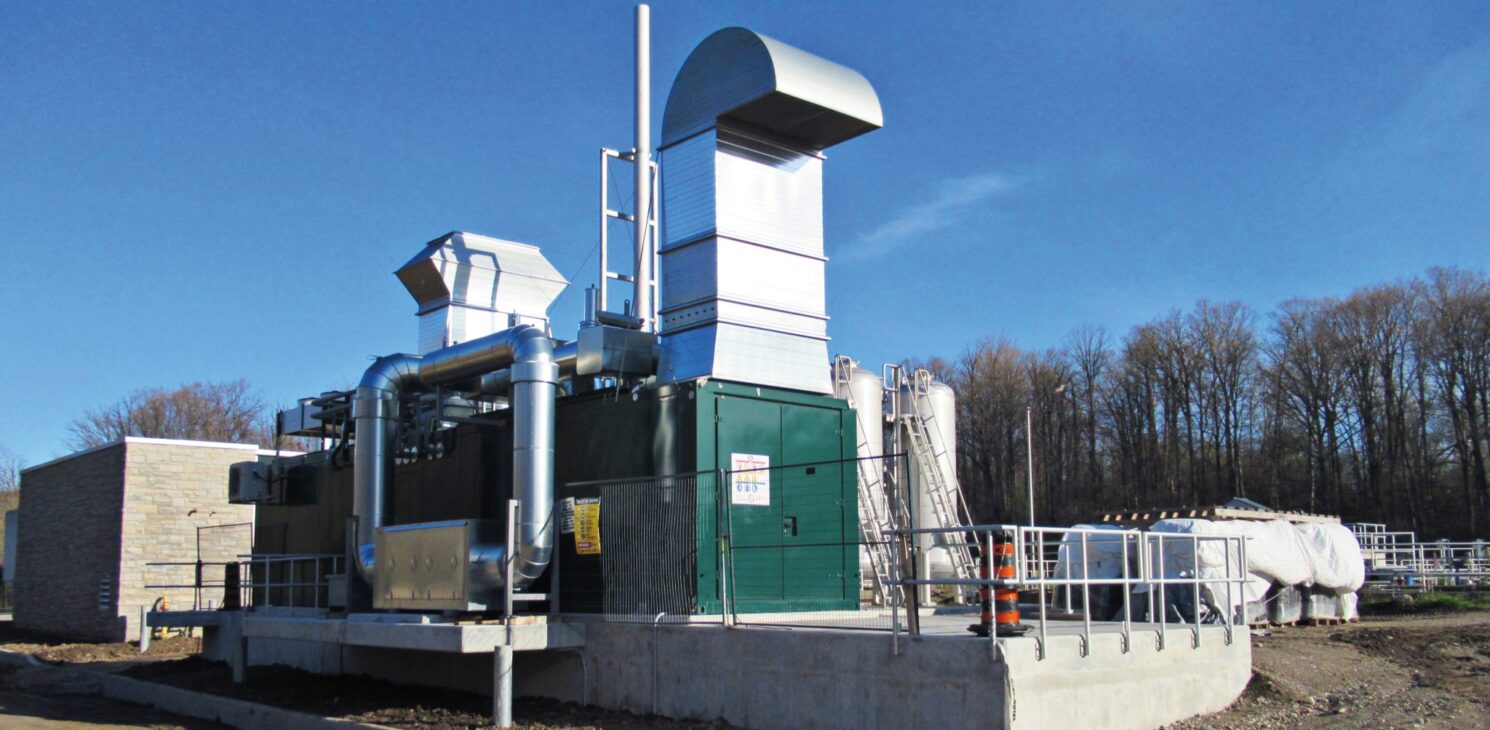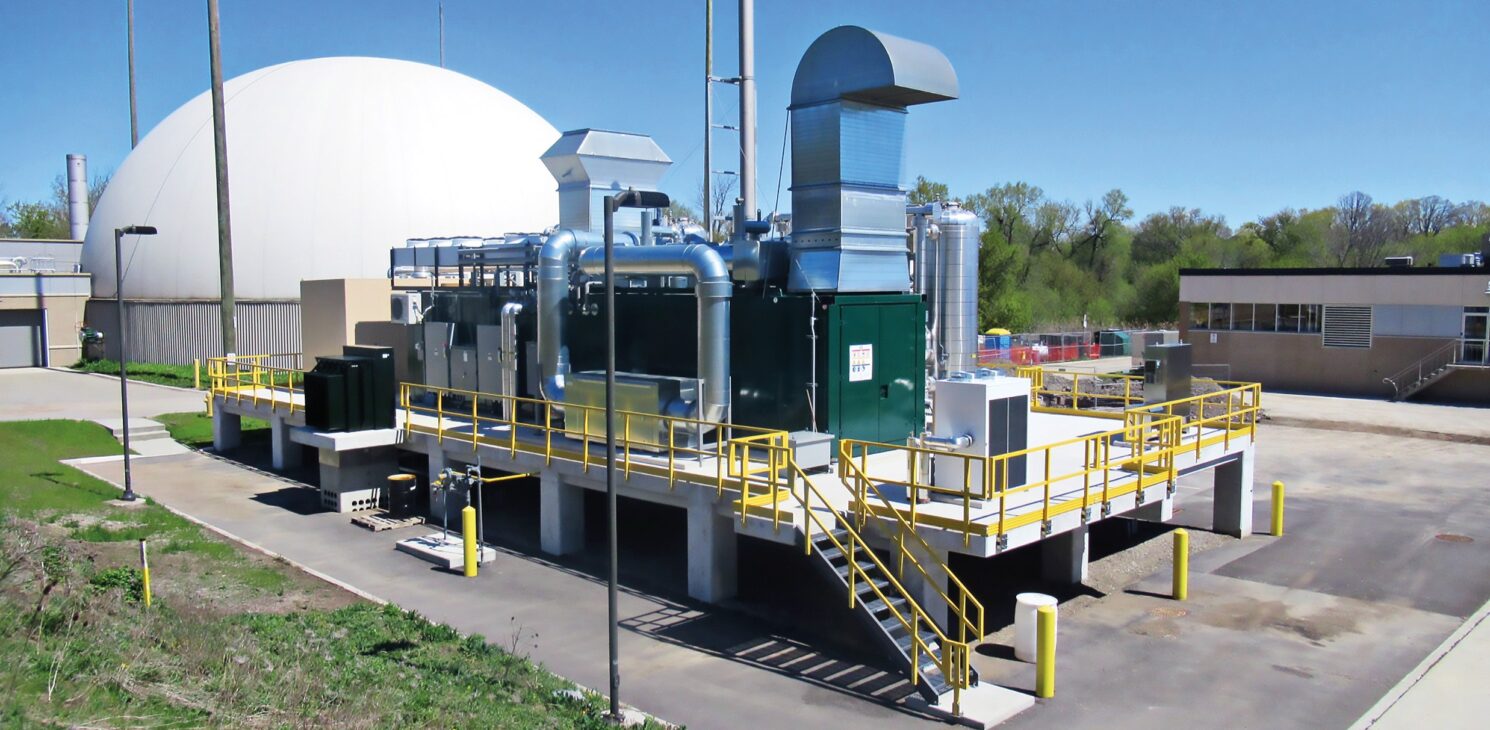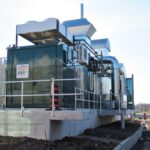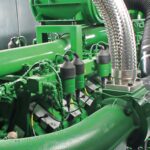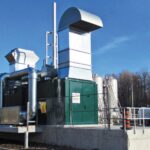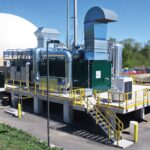Together, the Waterloo, Kitchener and Galt Wastewater Treatment Plants (WWTP) treat a combined flow of approximately 237 ML/d. Two potent greenhouse gases, methane and carbon dioxide, are produced during the treatment process when wastewater solids are digested by microorganisms. Up to 22,000 m3 of biogas can be produced by the three plants each day, which is equivalent to the carbon footprint of about 2,700 people.
Prior to the introduction of cogeneration technology at the plants, biogas was used onsite in boilers to provide building and plant-process heating. Any biogas not needed for heating was flared off, resulting in significant carbon dioxide emissions. Through cogeneration, the Region is able to efficiently use this renewable source of energy and eliminate a significant source of greenhouse gas pollution.
The project team worked with the Region to optimize the design of the cogeneration system to maximize use of the biogas not just in the near term but over the entire lifespan of the cogeneration engines. This will allow full use of the biogas for all of the anticipated 20-year operating period. We also worked with the Region to complete the design, construction and commissioning of the three facilities in time to meet municipal, provincial and federal funding-program deadlines.
CIMA+ provided structural and electrical engineering for the facility improvements as part of a consortium of companies led by Jacobs. The consortium included Eramosa, which specializes in electrical as well as instrumentation and control engineering and is now a CIMA+ company. The project won Canadian Consulting Engineering’s 2022 Award of Excellence, one of Canada’s highest honours in engineering.
Helping the Region to meet its environmental and climate-action goals while reducing costs
The implementation of the combined heat and power systems at the three facilities is helping the Region achieve the energy-conservation targets it set for itself in its 2019–2028 Corporate Energy Plan and the sustainable-development goals it set in its 2019–2023 Strategic Plan. The new systems will capture all of the biogas produced at the three WWTPs and convert it to green energy, eliminating approximately 1,900 tonnes of carbon dioxide emissions each year. By allowing the plants to meet a significant portion of their electricity and heating needs, the system is expected to lower energy costs by approximately $1.5 million per year. With an onsite source of renewable electricity, the three plants are also less vulnerable to future increases in the cost of electricity.
